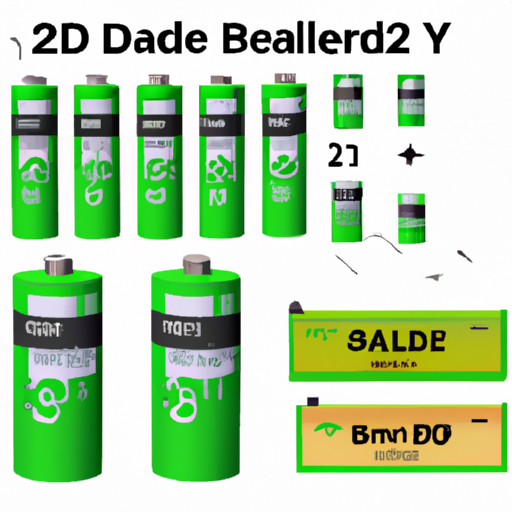BH2DL Batteries Rechargeable (Secondary)
Rechargeable batteries, also known as secondary batteries, play a pivotal role in modern energy storage solutions. Their versatility and efficiency make them indispensable across a wide range of applications, from consumer electronics to electric vehicles (EVs) and renewable energy systems. Below, we delve into the core functional technologies, notable articles, and application development cases that underscore the effectiveness of rechargeable batteries.
Core Functional Technologies
| 1. Lithium-Ion (Li-ion) Batteries | |
| 2. Nickel-Metal Hydride (NiMH) Batteries | |
| 3. Lead-Acid Batteries | |
| 4. Solid-State Batteries | |
| 5. Flow Batteries | |
| 1. "Advancements in Lithium-Ion Battery Technology" | |
| 2. "The Future of Solid-State Batteries" | |
| 3. "Comparative Analysis of Rechargeable Battery Technologies" | |
| 4. "The Role of Batteries in Renewable Energy Systems" | |
| 1. Electric Vehicles (EVs) | |
| 2. Grid Energy Storage | |
| 3. Consumer Electronics | |
| 4. Renewable Energy Integration | |
| 5. Portable Power Tools | |
Articles and Research Highlights
Application Development Cases
Conclusion

Rechargeable batteries are at the forefront of energy storage technology, with continuous advancements enhancing their effectiveness across various applications. From electric vehicles to renewable energy systems, ongoing research and development in materials and technologies are set to improve the performance, safety, and sustainability of these essential energy storage solutions. As the industry evolves, we can anticipate even more innovative applications and enhancements in rechargeable battery technology, paving the way for a more sustainable energy future.
BH2DL Batteries Rechargeable (Secondary)
Rechargeable batteries, also known as secondary batteries, play a pivotal role in modern energy storage solutions. Their versatility and efficiency make them indispensable across a wide range of applications, from consumer electronics to electric vehicles (EVs) and renewable energy systems. Below, we delve into the core functional technologies, notable articles, and application development cases that underscore the effectiveness of rechargeable batteries.
Core Functional Technologies
| 1. Lithium-Ion (Li-ion) Batteries | |
| 2. Nickel-Metal Hydride (NiMH) Batteries | |
| 3. Lead-Acid Batteries | |
| 4. Solid-State Batteries | |
| 5. Flow Batteries | |
| 1. "Advancements in Lithium-Ion Battery Technology" | |
| 2. "The Future of Solid-State Batteries" | |
| 3. "Comparative Analysis of Rechargeable Battery Technologies" | |
| 4. "The Role of Batteries in Renewable Energy Systems" | |
| 1. Electric Vehicles (EVs) | |
| 2. Grid Energy Storage | |
| 3. Consumer Electronics | |
| 4. Renewable Energy Integration | |
| 5. Portable Power Tools | |
Articles and Research Highlights
Application Development Cases
Conclusion

Rechargeable batteries are at the forefront of energy storage technology, with continuous advancements enhancing their effectiveness across various applications. From electric vehicles to renewable energy systems, ongoing research and development in materials and technologies are set to improve the performance, safety, and sustainability of these essential energy storage solutions. As the industry evolves, we can anticipate even more innovative applications and enhancements in rechargeable battery technology, paving the way for a more sustainable energy future.













